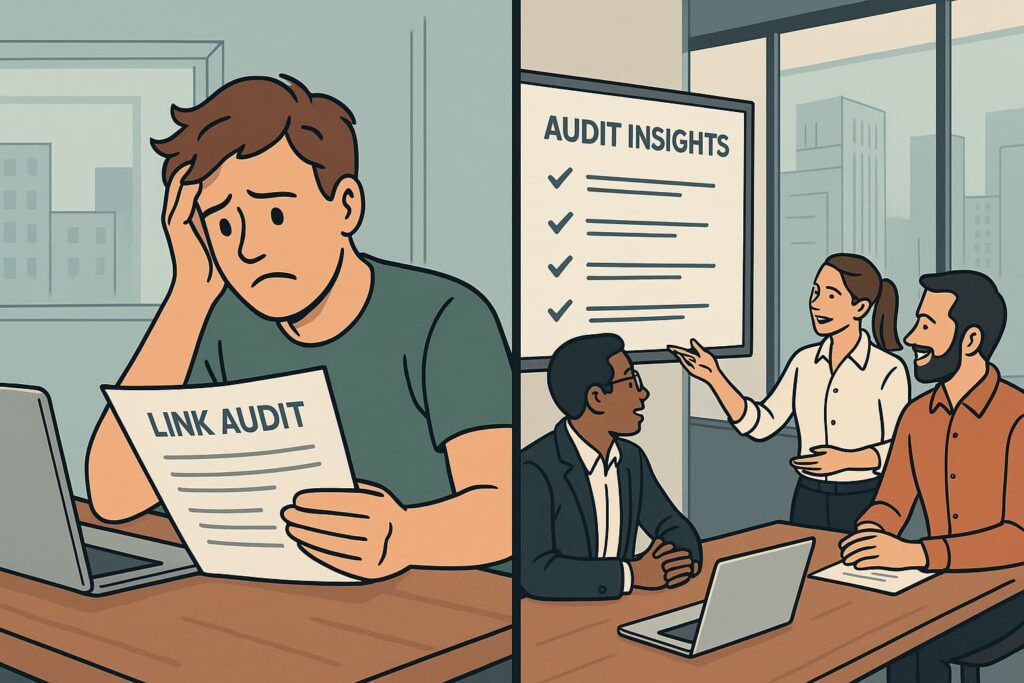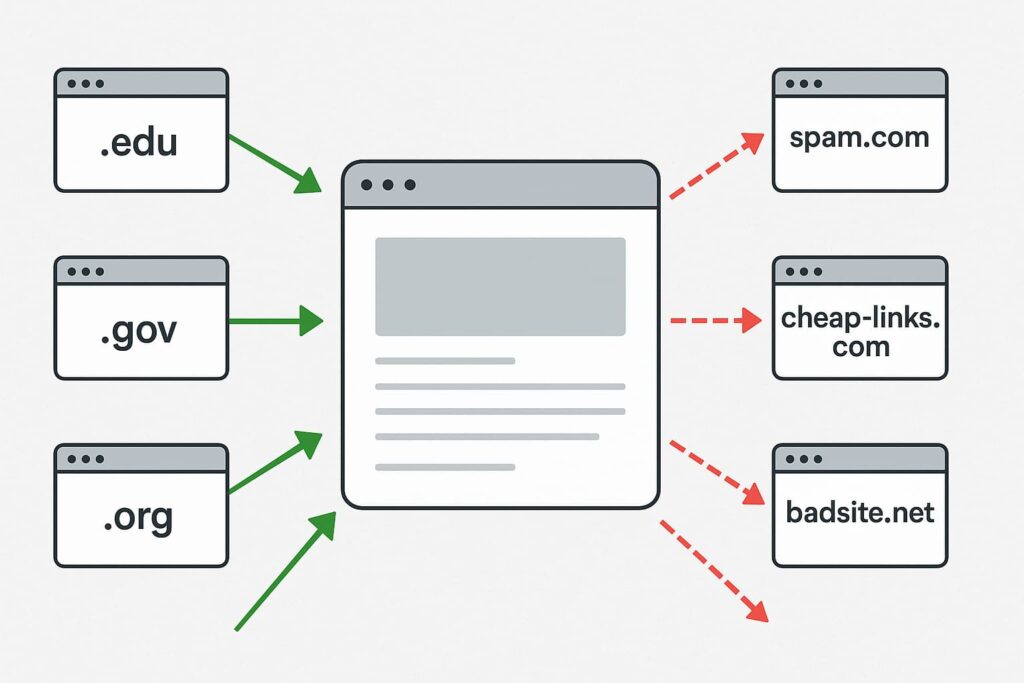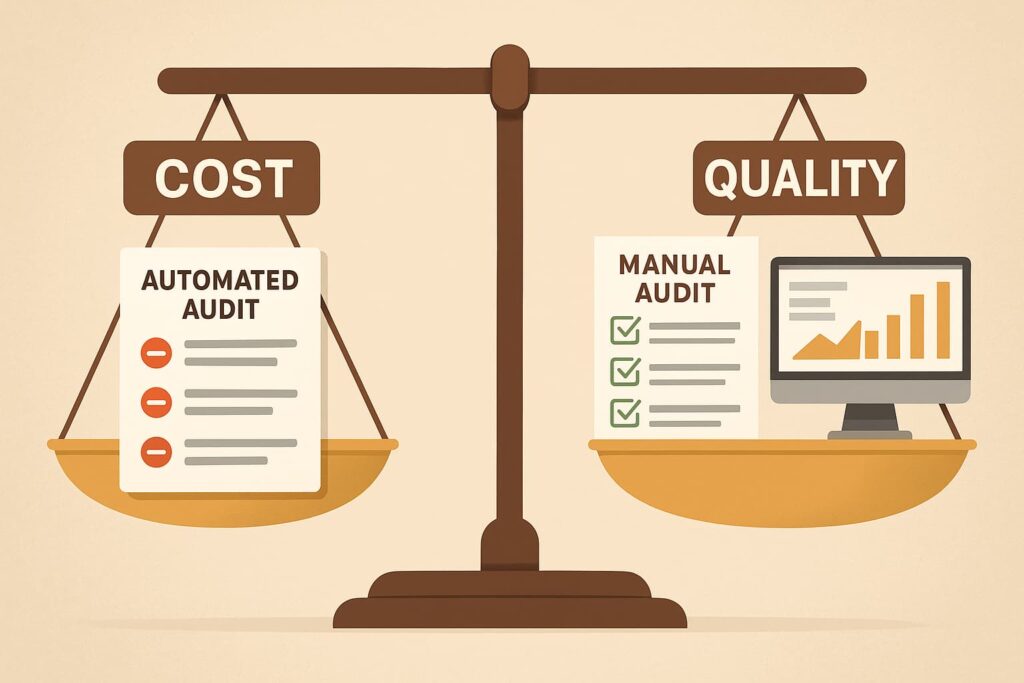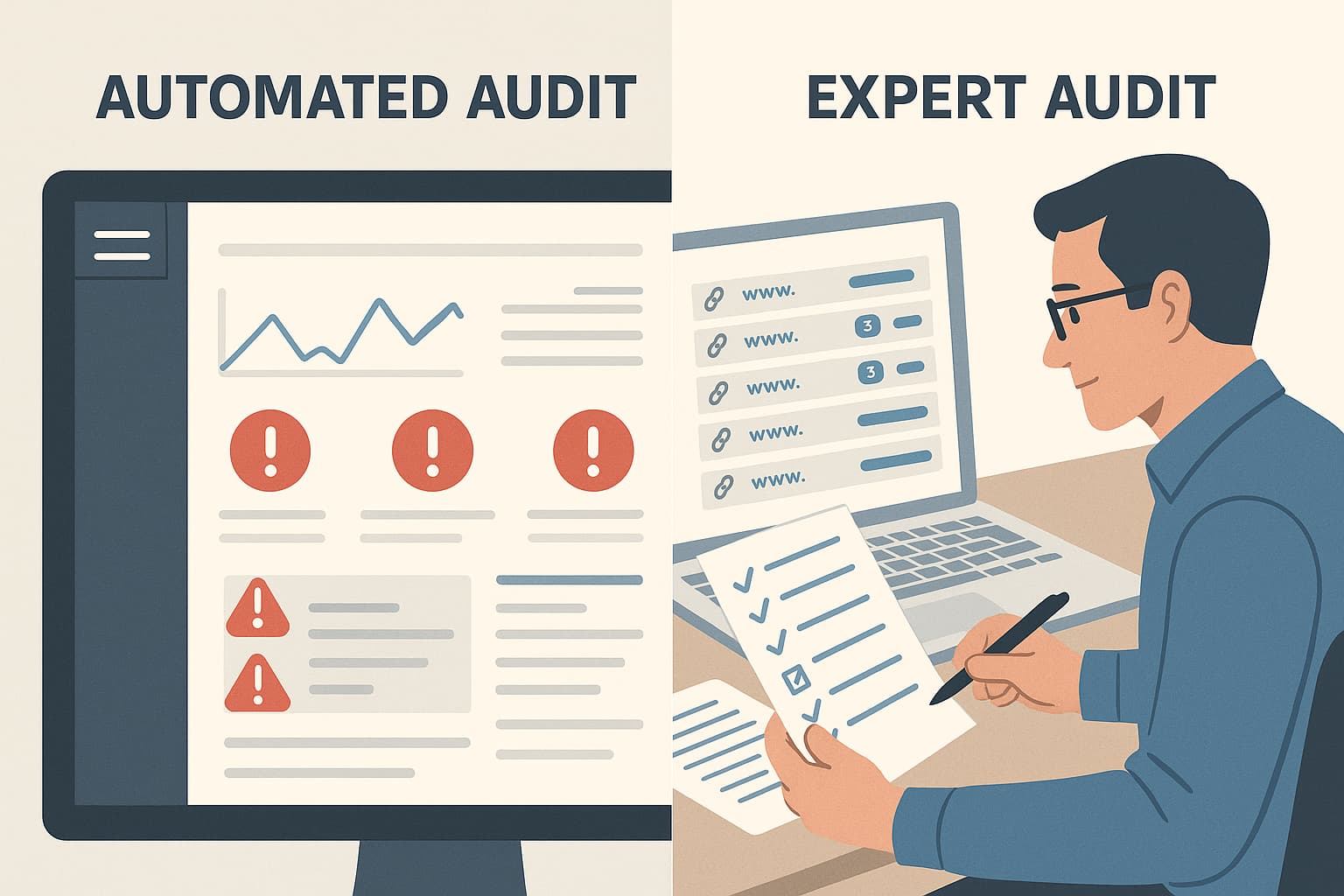A strong backlink profile is important for SEO, but not all links are good. Low-quality or spammy links can actually hurt your rankings, while high-authority backlinks can give your site a major visibility boost. That’s why a link building audit is so valuable—it helps you figure out which links are helping your site and which ones are holding it back.
The challenge is picking the right audit service. Some companies sell cheap, automated reports that don’t offer much useful insight, while others provide detailed, expert analysis—but at a higher price. The goal is to find the right balance: a service that’s cost-effective but still delivers accurate, practical recommendations to improve your SEO.
What Does a Link Building Audit Include?
A thorough link audit goes beyond just checking backlinks. It should cover:
1. Backlink Scan & Database Check
A complete backlink building audit begins with gathering your whole link profile utilizing reputable SEO tools such as Ahrefs, Majestic, Moz, or SEMrush. But here’s the catch: no single tool can capture every link since each has gaps in its database. To get a clear view, you will want to:
- Cross-check tools – Each misses different links.
- Spot sudden changes – Could mean penalties or lost links.
- Flag toxic links – Spammy or irrelevant ones hurt your rankings.
Cutting corners here means risking blind spots. A proper audit not only spots trouble but helps you build a safer, stronger link profile over time.
2. Link Quality Assessment
A thorough backlink audit must assess link quality, not just quantity, to ensure SEO success. Key factors include anchor text distribution, where a natural mix of branded, generic, and keyword-rich anchors is ideal, as over-optimized or spammy text can trigger penalties. Domain authority and relevance are critical, with links from high-authority, niche-related sites carrying more weight than those from low-quality or unrelated sources.
To avoid ranking damage, you should detect and remove toxic links from penalized domains, PBNs, or spam-heavy sites. Link velocity should also be watched, since unexpected surges might seem unnatural to search engines, potentially activating algorithmic filters. Evaluating these parameters assures a healthy and penalty-resistant backlink profile.
3. Lost Link Recovery
Authoritative backlinks can vanish due to site changes, broken pages, or accidental removal. A backlink audit identifies these lost links and assesses recovery potential—like contacting a webmaster to restore a high-value link removed during a redesign. Recovering a few strong links often outweighs building many new ones.
The audit should also determine why links were lost—outdated content, technical errors, or competing pages—to prevent future losses and improve long-term SEO.
4. Competitive Link Gap Analysis
A truly strategic audit does more than simply evaluate your backlinks; it compares them to major competitors to identify gaps and opportunities. This involves:
- Identifies authoritative sites linking to competitors but not you, creating a targeted outreach list.
- Reveals competitors’ link-building methods (guest posts, resource pages, news mentions) for replication.
- Highlights content gaps by showing what earned competitors their backlinks (studies, tools, guides).
For example, if three competing brands all have links from a major industry blog and you don’t, that signals a clear opportunity to pitch your content to the same site.
5. Toxic Link Removal & Disavow File Creation
Low-quality or spammy backlinks can harm your rankings and cause Google penalties. A comprehensive backlink audit not only identifies problematic links but also provides a clear roadmap for fixing them. First, try contacting webmasters to have dangerous links removed. If removal fails, use a disavow file—but make sure not to block useful links by accident.
Maintaining a clean backlink profile requires ongoing effort, as new toxic links can appear. Tools like Google Search Console help monitor new backlinks. For example, one penalized site recovered in weeks after auditing 12,000 links, removing 600, and disavowing 200—proving how critical regular cleanup is.
6. Actionable Recommendations
The best audits don’t just diagnose problems—they prescribe solutions. A high-value report includes:
- Link-Building Priorities – Should you focus on guest posts, HARO links, or unlinked brand mentions? The audit should identify the highest-impact opportunities.
- Content Strategy – If competitors earn links with data-driven studies, the audit might recommend commissioning original research. If they rank with product roundups, it could suggest pitching to reviewers.
- Anchor Text Optimization – A natural profile mixes branded terms (“Click here”), generic phrases (“Learn more”), and a few keyword-rich anchors. The audit should flag over-optimization risks.
- Resource Allocation – For larger sites, the report might prioritize fixing toxic links first, then pursuing high-authority links, then filling competitive gaps.
Real-world application: After an audit revealed 80% of a client’s links came from low-quality directories, they shifted resources to niche edits and PR placements—resulting in a 45% organic traffic increase in 6 months.
Why a Link Building Audit Matters

Before comparing expenses, you must first understand why a professional link audit should be part of your ongoing SEO strategy. A good backlink analysis is significantly more valuable than just listing your current connections; it delivers the knowledge required to defend and improve your search rankings.
Key Benefits of a Link Audit
Identifies toxic links that could trigger Google penalties, including spammy backlinks, PBNs, and manipulative anchor text
- Identifies toxic links (spam, PBNs, risky anchors) to avoid penalties
- Recovers valuable broken links worth restoring
- Exposes competitor gaps to improve your profile
- Optimizes link-building with actionable insights
- Protects rankings by catching harmful links early
The most successful audits mix computerized scanning and human examination. While technologies can detect blatant spam, expert SEOs can identify more subtle flaws, such as unnatural linking patterns or lost chances.
Cheap vs. Quality Link Audits: What’s the Real Difference?

Cheap audits may save money upfront, but they often miss the depth needed for real SEO impact. Understanding these differences helps businesses avoid wasted time and ineffective reports.
1. Automated Scans vs. Manual Review
Budget backlink audits typically rely on automated tools and free scanners, which can leave you vulnerable. While they might catch the most obvious issues, they often overlook critical warning signs, like suspicious anchor text, harmful links from banned sites, or hidden link schemes that could trigger Google penalties.
A truly effective audit, though, doesn’t just run on autopilot. It pairs smart tools with real human expertise. Experienced analysts peel back the layers to expose hidden threats—like spammy links in foreign languages or PBNs (private blog networks) cleverly disguised as legit sites—so nothing risky goes undetected.
2. Surface-Level vs. In-Depth Analysis
Budget audit services typically deliver superficial reports that only scratch the surface of your backlink profile. These basic assessments often include:
- Generic metrics like domain authority and spam scores without context;
- Automated link categorization with no human verification;
- Lack of competitive benchmarking or strategic recommendations;
- No identification of underlying patterns or risks.
In contrast, premium audits provide a comprehensive, multi-layered examination of your link profile through:
- Competitive gap analysis – Pinpoints exact linking opportunities competitors are capitalizing on that you’re missing.
- Lost link recovery plans – Identifies and helps restore valuable broken backlinks from authoritative sources.
- Proactive toxic link management – Includes direct webmaster outreach and precise disavow file creation.
- Historical trend analysis – Tracks link velocity to detect unnatural spikes that may trigger penalties.
- Anchor text profiling – Evaluates distribution patterns to prevent over-optimization risks.
- Content gap identification – Reveals which high-performing content types earn the most quality backlinks.
Premium audits analyze data in detail to create a practical SEO plan. This helps businesses focus on the most effective opportunities and avoid mistakes that drain time and resources. Such insights are especially useful for competitive industries or websites recovering from search engine penalties.
3. One-Time Report vs. Ongoing Support
Basic audits give you a PDF and little else—you’re left to figure out the next steps alone. Better services provide ongoing help, pointing out top link-building opportunities, backlink-friendly content (like research or tools), and safe anchor text strategies—plus follow-up audits as algorithms shift.
The best audits don’t just flag issues—they create clear action plans. They help you focus on fixes that actually boost rankings, saving time and effort. For competitive or penalized sites, this detailed approach is key to recovery and long-term growth.
Cost vs. Quality: What to Prioritize?

A cheap audit may save you money now, but it might cost you later in the form of lost opportunities or unsolved concerns. If long-term SEO health is important, investing in a complete audit is typically the better option.
Many businesses opt for cheap audit services, hoping to save money. However, low-cost audits often:
- Cheap audits often cut corners, missing 30-40% of backlinks with outdated tools.
- Generic, templated reports lack niche-specific insights.
- Skip critical growth drivers like competitive analysis & lost link recovery.
- No prioritized recommendations, leaving teams unsure of next steps.
- Lack of technical insights on link patterns, risking future issues.
A high-quality audit may cost more upfront but delivers 5-10x greater long-term value because it:
- Prevents costly penalties with months-long recovery;
- Recovers high-authority links for quick ranking boosts;
- Exposes competitor gaps for untapped opportunities;
- Delivers actionable roadmap tied to your goals;
- Decodes complex link data with expert insights.
Where to Get the Best Link Building Audit
Not all SEO audits are created equal. Some agencies simply flag toxic links, while others deliver a full roadmap for building a stronger backlink profile.
If you’re looking for a thorough, actionable audit, a few providers go the extra mile. Take 3XE Digital, for instance—they don’t just scan for bad links. Their process includes competitor gap analysis, lost link recovery, and customized recommendations to level up your link-building strategy. For businesses that need more than a surface-level report, they’re a smart choice.
Other reputable providers include:
- Ahrefs (for self-audits using their backlink checker).
- SEMrush (for competitor backlink analysis).
- Moz (for spam score and domain authority checks).
However, tool-based audits have limitations—they can’t identify which links are genuinely harmful or provide recovery strategies. That’s why many businesses turn to agencies that pair data-driven scans with expert manual review.
Conclusion
A good backlink audit identifies damaging links, lost opportunities, and rival vulnerabilities that simplistic methods miss. While there are low-cost choices available, they will not provide you with the valuable information required to boost your SEO. A good audit combines tools and professional assessment to help you restore rankings, prevent Google penalties, and achieve long-term success. It’s a wise investment for improved search results.



